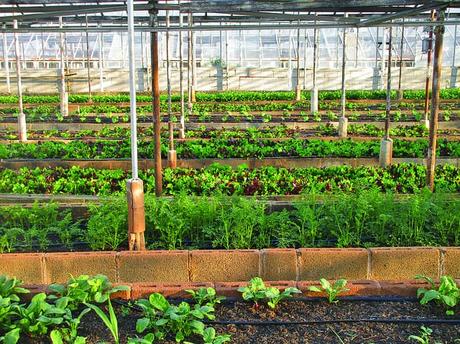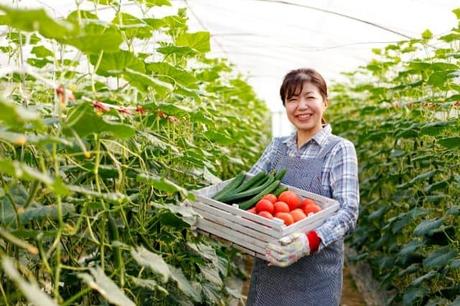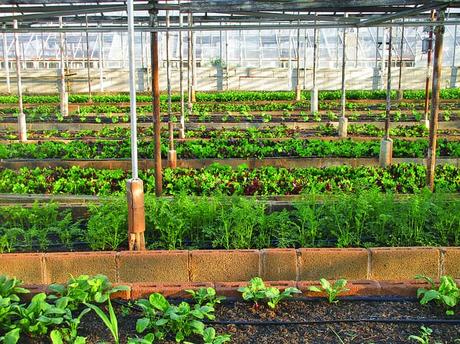What is Urban Agriculture?
Urban agriculture can be described as the growing of plants and the rearing of animals primarily for food and other domestic use within a city or a town and its environs. It also involves activities such as the production, processing, marketing, and delivery of farming products. Urban agriculture consists of a number of production systems. They vary from domestic production and household level processing to large scale agriculture. This is usually done within the city peripherals.
Urban agriculture shows great potential in the fulfillment of basic human needs, it not only provides food but also ensures a sustainable distribution and production system thereby creating employment opportunities and regular income for individuals. It also helps countries in the protection of their environment and saving upon their foreign currency and transportation costs.

Types of Urban Agriculture
1. Backyard Gardens
This is the growing of food on home property. Its produce is mostly shared among friends, family, and neighbors as it typically leads to a surplus in the harvest. The food can also be stored and preserved. Backyard gardens are beneficial to communities as neighbors can share each other’s backyard and employ different methods of farming leading to better yields.
2. Tactical Gardens
This involves using the limited space available to practice agriculture without having to incur hefty expenses. For instance, an urban dweller could easily make a keyhole garden to cover a space that was intended for car parking in the street. This puts to good use land that could have potentially have gone to waste and instead creates an activity that can be done for leisure or to make more food.
3. Street landscaping
This is the landscaping of streets for different uses such as community gardens, which are tended to by the people in the neighborhood. They not only make the streets look beautiful but also purifies the air creating a clean environment. Since they are primarily located along the street, their added advantage is their capability of reducing urban stormwater runoff.
4. Forest gardening
It pertains to the practice of having gardens grown within an urban forest. Forest gardening is achieved by having different crops, vegetables, and fruits grown within urban settings. Forests usually create an environment that is favorable for crop development and for this reason, they help in ensuring that forests are protected and can make deforestation a nonfactor in the urban settings. Forest gardening can also be part of afforestation efforts, which encourages the planting of trees as a step towards the fight against global warming in urban areas.
4. Greenhouses
It involves the practice of agriculture in residential, commercial, and communal urban spaces in greenhouses. They require a substantial size of land to set up depending on the crops being planted. Greenhouses give farmers the ability to grow a crop all year round as they provide a controlled environment where the crops can be subjected to specific conditions required for their growth.
5. Rooftop gardens
Since urban areas have limited space, it does not mean agriculture cannot be practice. This is where rooftop space comes in as they can easily be utilized for cropping vegetables, fruits, and herbs. The advantage of rooftop gardens is that it can aid in reducing urban heat island as well as improving the air quality. Aside from these, rooftop gardens can be used to beautify recreational facilities.
6. Green walls
The green wall encompasses the growing of vegetation or food crops on the external or internal space of a wall. It does not use up a lot of space as the mechanism used helps to supply the food with adequate water and it uses soil present on the walls. It is a good method for reducing stormwater runoff.
7. Vertical farms
This involves potentially farming upwards to reduce the agricultural land footprint. Green walls can be used as a method for vertical farms as it also uses minimal space and is practiced on the sides of vertical walls.
8. Animal husbandry
This is the practice of rearing animals for food in urban settings. An urban dweller can choose a location suitable for keeping different types of animals or focus on specific animals such as poultries, goats, rabbits, or sheep. Some cities limit the number of animals one can keep and also the type of animals that can be kept.
9. Urban beekeeping
This is a possibility but comes with a lot of restrictions and regulations from the local government depending on the location and the city. In other words, the requirements for beekeeping may vary from city to city. If practiced, however, it has lots of benefits to the local environment. Bees are important to the ecosystem as they not only produce honey but act as pollinators and promote biodiversity.
10. Aquaponics
This entails the practice of rearing aquatic animals like fish in urban areas. It involves the use of a system that captures stormwater from within the city and then creating a self- sustaining a recirculating system in tanks or artificial fish ponds. It is an efficient way of rearing crops and a protein alternative.

Benefits of Urban Agriculture
1. Economic benefits
- Income generation – urban agriculture leads to the establishment of new businesses, which not only creates income for its owners and employment opportunities for people in the community. This provides an avenue for the employees to earn a living and ultimately help the business to grow and sustain their operations.
- Local government benefits – it helps the local government to raise revenue which helps them in running their operations, the land set aside for urban agriculture also increases in value as it is put to good use. This reduces the cost the government has to incur to maintain the land and thwarts efforts made by people to illegally dump materials in the land or vandalize the property.
2. Environmental benefits
- Reduces stormwater runoff and improves urban environment quality – Urban agriculture has plenty of benefits on the environment. It reduces stormwater runoff through aquaponics and street landscaping. Furthermore, it supports biodiversity, improves air quality, and can mitigate urban heat island impacts.
- Integrated pest management system – urban agriculture requires less use of industrial chemicals, which limits the use of herbicides, artificial fertilizers, and pesticides; especially when practicing organic farming. The benefits vary in impact and they are dependent on the type of agriculture practiced, and the methods used in maintaining them.
- Crop preservation and new crop development – Urban agriculture creates homes for pollinators to increase the chances of preserving indigenous crops, which may not fare well under other conditions. It also leads to the breading of new crops by sharing seeds.
- Reduction of the local carbon footprint – Urban agriculture grows food mostly in the geographical location where it is also consumed. This helps in reducing the carbon footprint made by the farms, especially emissions from transportation mediums. The green plantations also go a long way in acting as carbon sinks, particularly through the practice of urban forestry.
3. Social and cultural benefits
- Community participation – Urban agriculture creates opportunities for local communities to participate in related activities. Urban agriculture helps communities put to good use public properties that have been underused for agricultural purposes such as animal husbandry and urban forestry.
- Improves unity among members – The communities get the most benefits as neighbors get involved and also achieve a certain level of commitment. This helps in the organization, advocacy, and making decisions that consider the interests of the community and environmental protection.
- Maintaining of cultures – Cultural practices are also shared. Continued interactions through urban agricultural activities create intergeneration bonds and people from different age brackets get to share significant information about certain food crops, vegetation, indigenous herbs, and domesticated animals such as poultry.
4. Education, skill-building, and job training benefits
- Training and development – Projects initiated by urban agriculture have initiatives that are aimed at skill improvement and training opportunities for jobs and opportunities that arise from the activities. Active participation in activities around urban agriculture such as beekeeping and poultry farming helps individuals develop important life skills that can help them create job opportunities or create their own source of livelihood.
- Creativity and innovation – Urban agriculture also gives access to the vast knowledge in food systems, how to sustain them, the different areas in which they are used, and other essential agricultural products as well as a healthy diet. The knowledge acquired helps individuals to come up with new ways of practicing urban agriculture or improving already existing systems.
5. Health, Nutrition and Food Accessibility Benefits
- Creates a sense of urban food security – Urban agriculture is a community-based enterprise. It, therefore, has a big chance of boosting the local demand for food such as vegetables and fruits. Urban agriculture ensures fresh food is available and affordable and helps producers find alternatives to buying food thus reducing the cost of living. Donating surplus food to food banks by community farms also ensures a steady food supply, which reduces the expenses incurred by people and families with low income.
- Availability of a variety of fresh foods – Urban agriculture promises fresh food availability. With the availability of fresh foods, it reduces the dependence on processed foods thereby translating into a healthy society and reduced risk of lifestyle diseases such as cancer and obesity.
- Maintaining food nutrient content – Urban agriculture ensures that products delivered in the market to consumers are handled by fewer intermediaries, which reduces nutrient deterioration and food damage during transportation. Furthermore, farms in urban agriculture use strategies that eliminate the use of chemicals in pest management, which reduce the risk and exposure of toxic matter to people who consume the food and the supply of water.


